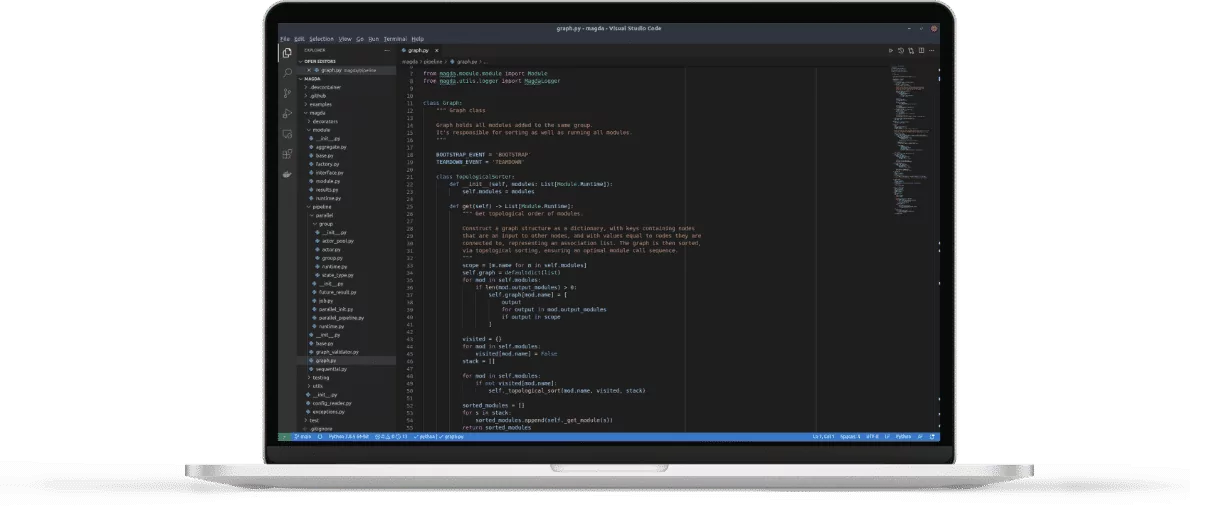High-level language
Python is a high-level language, requiring less focus on hardware aspects and architecture agnostic – it doesn’t have to run on a particular architecture. Applications built with Python often run as efficiently as those created in low-level languages, while requiring less code.
Extensive standard library
Various open-source libraries streamline the development of solutions without the need to build particular functionalities from scratch. There are over 200 modules in the standard library, just waiting to be used for the most common tasks. Additionally, there are over 130,000 libraries facilitating development, most of which were created for data analytics, data mining, and automation. The most popular are Pandas, Matplotlib, NumPy, BeautifulSoup, SciPy, and Scrapy.
Cross-platform
Python applications run on different operating systems, without the need to build or compile them on each platform individually, as long as devices have the Python interpreter installed (and many operating systems have Python pre-installed). This enables gradual system shifts instead of complete code rewriting while adapting legacy in extensive projects.
Dynamic analysis
Enables all variables and values to be tracked as the program runs, both on real and virtual processors. Also referred to as dynamic code scanning, dynamic analysis facilitates error recognition and repair, resulting in simplified trouble-shooting.
Notebooks
Python comes with the opportunity to build and test code in notebooks like Jupyter. Instead of coding the complete solution, testing it as a whole and re-writing if it turns out to be flawed, once a particular element tested in a notebook is considered correct, it can be implemented into the whole code. The feature is particularly useful in data science and machine learning projects. Notebooks can be accessed from any computer, while calculations happen on computing servers.
Free and open source
There are 7 million Python programmers, a large and constantly growing community developing the technology. With great community support, creating newer and newer libraries, there’s a great chance that projects built in Python will remain up-to-date for much longer, with little to no risk of becoming obsolete any time soon.



















